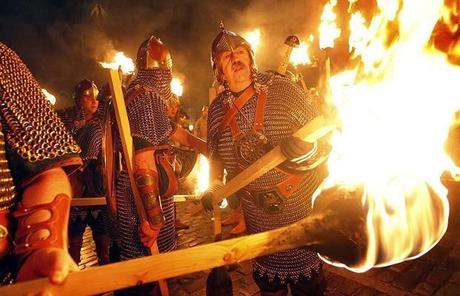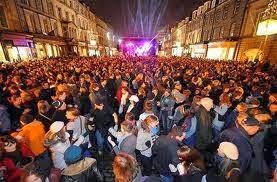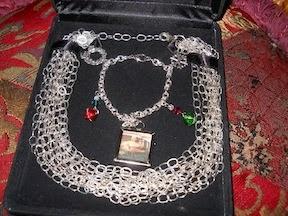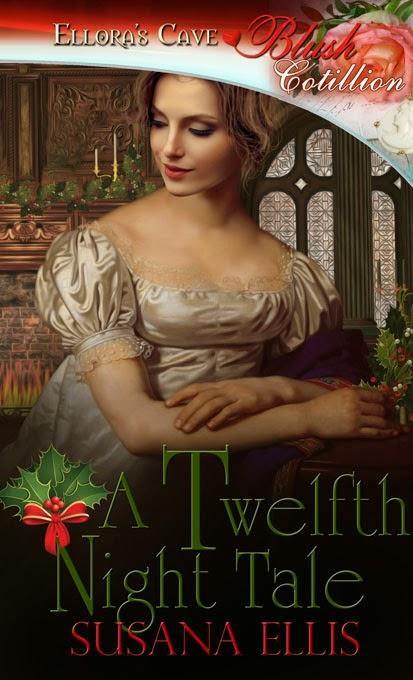Traditions of Hogmanay
The essential notion of Hogmanay (and New Year’s) is to clear out the old year and celebrate the clean slate offered by the coming year with family and friends. Not so different from most modern New Year’s celebrations, actually. But rather than making lists of resolutions, Hogmanay celebrants have other ways to celebrate.
- Pay your debts before midnight.
- You may “redd up” the house and clear out the ashes in the hearth before midnight, but not before noon on New Year’s Day, because doing so would be to cast out your quota of good luck for the rest of the year.
- Sing Auld Lang Syne (an age-old song rescued published by Robert Burns in 1788)
- Make a toast to health, wealth and happiness in the coming year (with Scottish whiskey, of course).
- First Foot- The First Foot is the first person who crosses the threshold of the home after midnight on New Year’s Day (Christmas Day in some places). Traditionally, the First Foot must be a dark-haired male. In most places, blonds (reminiscent of Vikings and therefore trouble) and redheads signify bad luck. Females, particularly redheads, are considered to bring even worse luck. Depending on the region, the First Foot must bring a coin, a lump of coal, a piece of bread or shortbread, whiskey, salt and black bun—representing food, flavor, warmth, good cheer and financial prosperity in the new year. The First Foot should be an uninvited stranger. It was quite common for (dark-haired) young men to make the rounds of the households in their neighborhood to ensure good luck—and ensure a good time by being invited to drink toasts with the families of all the homes they first-footed.
- Saining - Saining a household involves blessing the house and the cattle with “holy water” from a nearby stream, after which, the woman of the household walks through the house with a smoking juniper branch to purify it from the taint of evil spirits. Of course, the smoke would get everyone coughing and require a dram or two of whisky to aid in recovery.
- People dressing up in hides of cattle and going around being hit by sticks
- Sticks (known as Hogmanays) covered with animal hide and used to ward off evil spirits
- Rolling tar barrels down a hill, lighting bonfires, tossing torches.
Modern Hogmanay Celebrations


In Stonehaven (a coastal city south of Aberdeen), giant fireballs (representing the sun) on five-foot poles are carried by 60 men as they march up and down the street to frighten off evil spirits.

These days, January 2nd is also a holiday in Scotland…to give people a chance to recover from all of their Hogmanay merrymaking.
Traditional Hogmanay Foods
- black bun (pastry with a filling of fruitcake)
- shortbread
- venison pie
- rumbledethumps (vegetable fry-up)
- haggis (the national dish of Scotland)
*It wasn’t until 1958 that Christmas Day became a national holiday. Up until then, it was a normal working day.
References
http://www.mystical-www.co.uk/index.php?option=com_content&view=article&id=77&Itemid=220
http://www.rampantscotland.com/know/blknow12.htm
http://en.wikipedia.org/wiki/First-Foot
http://britishfood.about.com/od/festivecooking/p/hogmanay.htm
http://gouk.about.com/od/festivalsandevents/qt/hogmaney.htm
http://www.thescotlandkiltcompany.co.uk/news/new-years-celebrations-in-scotland
 Celebrate the Release Day of A Twelfth Night Tale!
Celebrate the Release Day of A Twelfth Night Tale!Susana is giving away a fabulous sterling silver necklace and A Twelfth Night Tale Christmas charm bracelet (silver-plated). Click here for the Rafflecopter!
About A Twelfth Night Tale
 A wounded soldier and the girl next door find peace and love amidst a backdrop of rural Christmas traditions.
A wounded soldier and the girl next door find peace and love amidst a backdrop of rural Christmas traditions. Without dowries and the opportunity to meet eligible gentlemen, the five Barlow sisters stand little chance of making advantageous marriages. But when the eldest attracts the attention of a wealthy viscount, suddenly it seems as though Fate is smiling upon them.
Lucy knows that she owes it to her younger sisters to encourage Lord Bexley's attentions, since marriage to a peer will secure their futures as well as hers. The man of her dreams has always looked like Andrew Livingston, her best friend's brother. But he's always treated her like a child, and, in any case, is betrothed to another. Perhaps the time has come to put away childhood dreams and accept reality…and Lord Bexley.
Andrew has returned from the Peninsula with more emotional scars to deal with than just the lame arm. Surprisingly, it's his sister's friend “Little Lucy” who shows him the way out of his melancholy. He can't help noticing that Lucy's grown up into a lovely young woman, but with an eligible viscount courting her, he'll need a little Christmas magic to win her for himself.
Available
Ellora's Cave • Amazon • Barnes & Noble • Kobo
About the Author
 A former teacher, Susana is finally living her dream of being a full-time writer. She loves all genresof romance, but historical—Regency in particular—is her favorite. There’s just something about dashing heroes and spunky heroines waltzing in ballrooms and driving through Hyde Park that appeals to her imagination.
A former teacher, Susana is finally living her dream of being a full-time writer. She loves all genresof romance, but historical—Regency in particular—is her favorite. There’s just something about dashing heroes and spunky heroines waltzing in ballrooms and driving through Hyde Park that appeals to her imagination. In real life, Susana is a lifelong resident of northwest Ohio, although she has lived in Ecuador and studied in Spain, France and Mexico. More recently, she was able to travel around the UK and visit many of the places she’s read about for years, and it was awesome! She is a member of the Maumee Valley and Beau Monde chapters of Romance Writers of America.
Contacts
Web site • Email • Facebook • Twitter • Linked In • Pinterest • Google+ • GoodreadsSusana’s Parlour (Regency Blog) • Susana’s Morning Room (Romance Blog)
